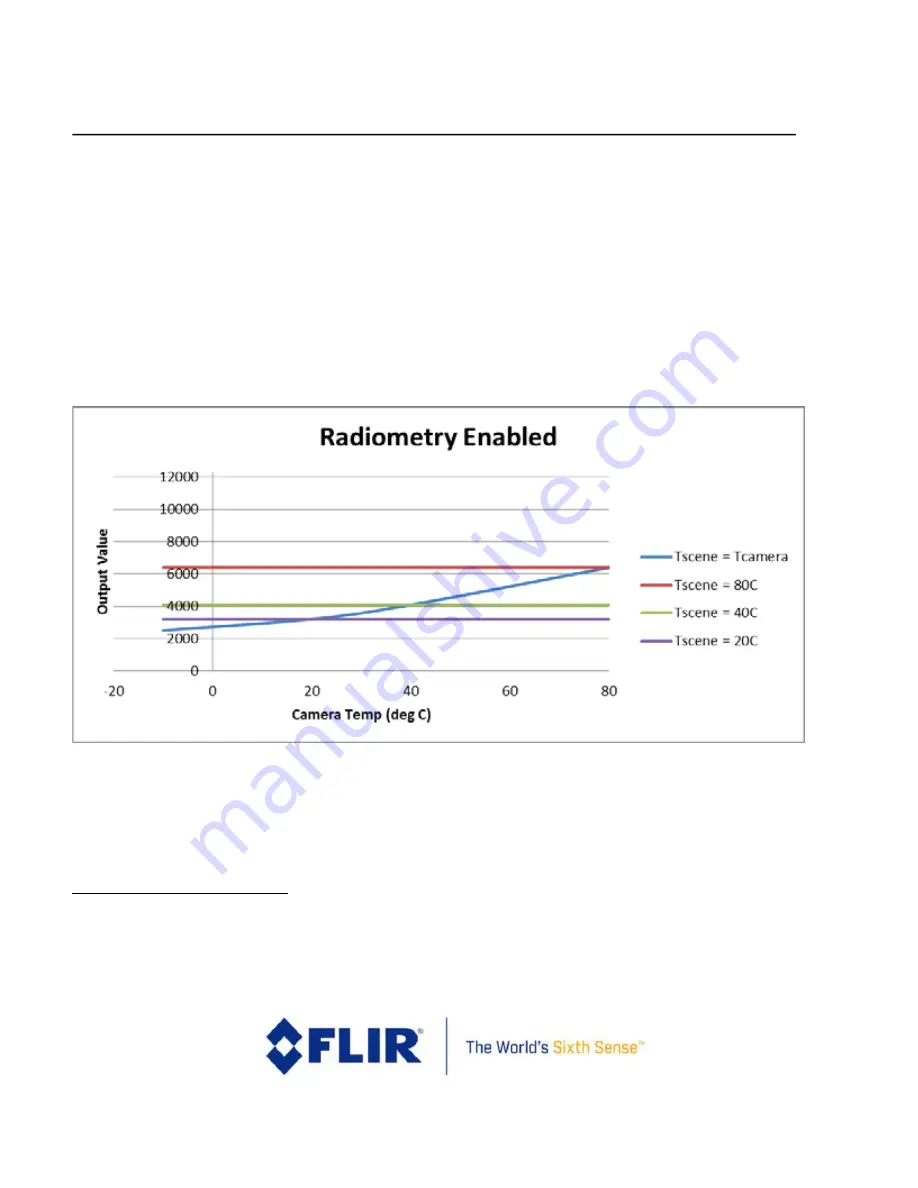
FLIR
LEPTON® Engineering Datasheet
The information contained herein does not contain technology as defined by the EAR, 15 CFR 772, is publicly available,
and therefore, not subject to EAR. NSR (6/14/2018).
Information on this page is subject to change without notice.
Lepton Engineering Datasheet, Document Number: 500-0659-00-09 Rev: 203
31
With radiometry enabled, Lepton performs internal adjustments to the signal level such that in principle the
output is independent of the camera's own temperature. The resulting output for three different scene
temperatures is illustrated hypothetically in
that the output is only a function of
scene temperature, not camera temperature (again, the figure is for illustration purposes only and not perfectly
representative. In practice, there is slight output variation as camera temperature changes, particularly when the
temperature change is rapid). Also notice that responsivity is also independent of camera temperature; that is,
the difference in output between two different scene temperatures is a constant, as opposed to in
page
, where it decreases with increasing camera temperature.
Figure 10 - Hypothetical Illustration of Camera Output in counts vs. Camera Temperature in
Radiometry-enabled Mode
3.5.3
Radiometry Disabled
With radiometry disabled, the output of a given pixel is intended to be in the lower quarter of the 14-bit range
(~4096) when viewing a scene with a temperature equal to the temperature of the camera.
9
Furthermore, the
responsivity, which is defined as the change in pixel output value for a change in scene temperature, varies over
9
With Lepton 1.5, 1.6, 2.0 and 3.0, the output was intended to be in the middle of the 14-bit range (~8192) but was updated
to provide more scene dynamic range at the hotter end of the spectrum for the radiometric release.
















































